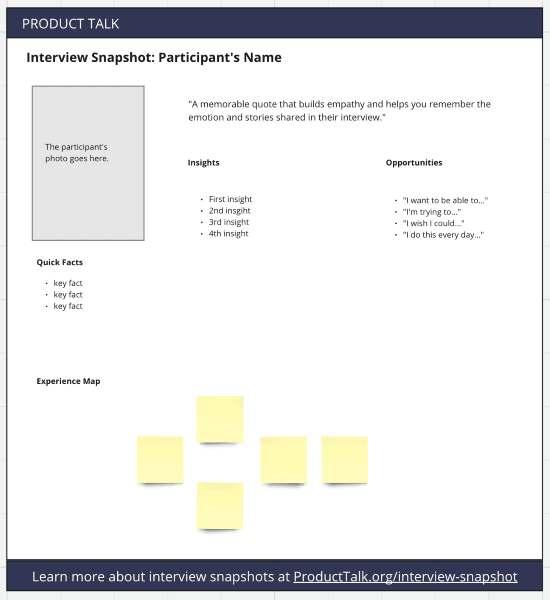🛠️ How to Navigate Product Discovery Like a Map
How to Navigate Product Discovery Like a MapDear Reader, “We need to complete all six Discovery phases in order." "Let's perfect that JTBD statement before we talk to users." "Our process requires detailed one-pagers before any customer interviews." Does this sound familiar? These are examples of dogmatic defaults: Teams cycling through the same tools in the same order, regardless of context. While these practices aren't harmful, blindly following them as processed often means missing faster paths to reducing uncertainty. Instead of rigid processes, think of Discovery as a path you navigate. It consists of: Entry Points: Where you begin. Shaped through (new) business goals, changes in market conditions, or other triggers. Crossroads: Pivotal „What do we need to learn next“ moments that determine the direction of a team’s moves. Articulated through research intent questions (problem space) or assumptions (solution space). Moves: The distinct methods you use to progress.Typically in the shape of qualitative or quantitative methods linked to the specific research intent question or assumption Commitments: States of informed conviction leading to clear decisions. Conviction about additional needed work to reduce uncertainty, discarding a problem or solution, or committing to and implementing a solution The key is not which method you use but how you choose your next move based on what you need to learn. When navigating Discovery Paths, constantly ask yourself: What activity maximizes uncertainty reduction while shortening the lead time to the next viable insight as much as possible? Here are the paths of a Product Team working on a financial trading app: Product Discovery isn't about following prescribed steps. It's about using evidence to reduce uncertainty about what problems are worth solving and what solutions are worth delivering. Stop waiting for perfect conditions. Start reducing uncertainty from whatever entry point you find yourself at. Did you enjoy this newsletter or have feedback? Do reply. It's motivating. I'm not a robot; I read and respond to every subscriber email I get (just ask around). If this newsletter isn't for you anymore, you can unsubscribe here. Thank you for Practicing Product, Tim PS: Thanks to Paulius Tuzikas for contributing to the "accidental" shaping of the idea of Product Discovery Paths derived from our conversation. PPS: Join me on Nov 12 for an in-person deep dive on Product Discovery practices at Product Tank Cologne. Join my In-Person Workshops in BerlinI'm excited to bring my beloved in-person workshops back to Berlin in January 2025. You can choose between 1-day workshops on Product Strategy, Product OKRs, or Product Discovery OR get the full 3-day experience for you or your team.
(reach out for custom team quotes) What did you think of this week's newsletter?
As a Product Management Coach, I guide Product Teams to measure the real progress of their evidence-informed decisions. I focus on better practices to connect the dots of Product Strategy, Product OKRs, and Product Discovery. |
Product Practice Newsletter
1 tip & 3 resources per week to improve your Strategy, OKRs, and Discovery practices in less than 5 minutes. Explore my new book on realprogressbook.com
Product Practice #388 Your Strategy Can't Help You If It Can't Help You Say No during Execution READ ON HERBIG.CO PUBLISHED Dec 12, 2025 READING TIME 3 min & 23 sec Dear Reader, Stephanie walked out of her strategy presentation feeling confident. The executives had nodded approvingly. Every field on her strategy canvas was filled in. Her product strategy for GearSwap, an outdoor gear marketplace, conveyed a clear message: “The GearSwap marketplace will proactively help weekend warriors and...
Product Practice #387 Can We Drive the Same Outcome for Different Customer Segments? READ ON HERBIG.CO PUBLISHED Dec 5, 2025 READING TIME 4 min & 40 sec Dear Reader, "An outcome is a measurable change in human behavior that creates business value." (via Josh Seiden). But what if different customer segments share the same problem? Should you repeat the outcome on your impact map? The answer: Yes—when it forces clarity. From the chapter "Targeted Discovery" in my Book Real Progress Let me give...
Product Practice #386 Why your Discovery Insightsneed an Expiration Date READ ON HERBIG.CO PUBLISHED Dec 29, 2025 READING TIME 5 min & 32 sec Dear Reader, "I believe we should split-test this change to the funnel." "No, we tried that 3 years ago. Didn't work." End of story...right? 9-ish years ago, I got to listen to Willem Isbrucker sharing his insights from running experiments at booking.com (famous for their quantitative data-first approach) at ProductTank Hamburg. Among other things, he...
